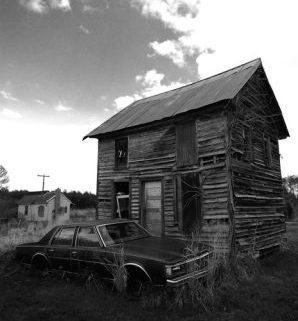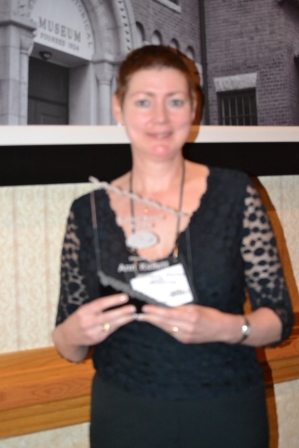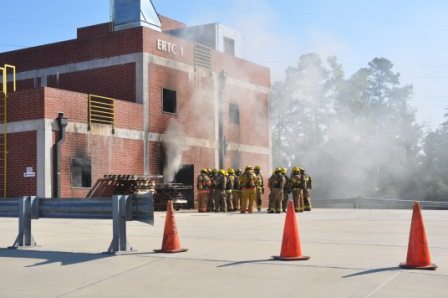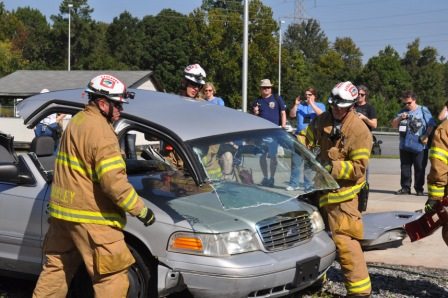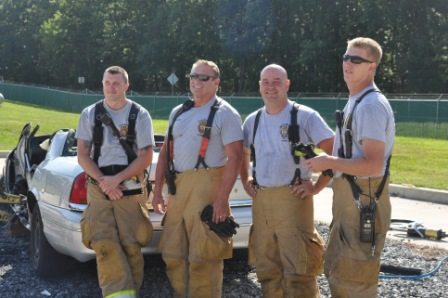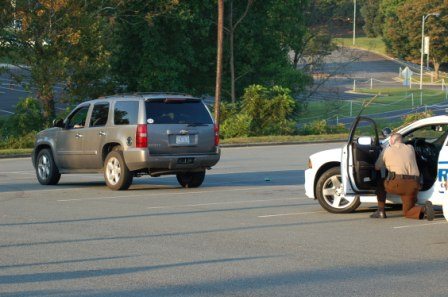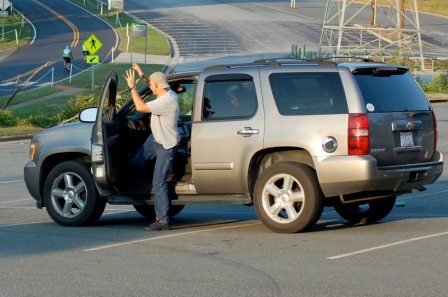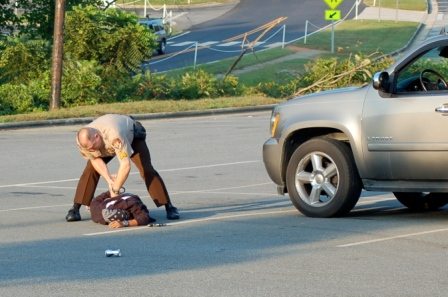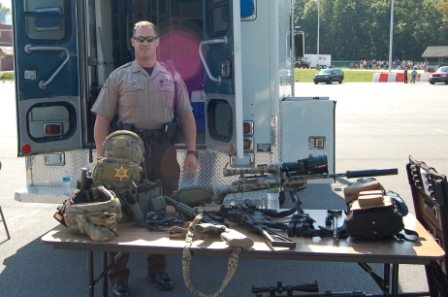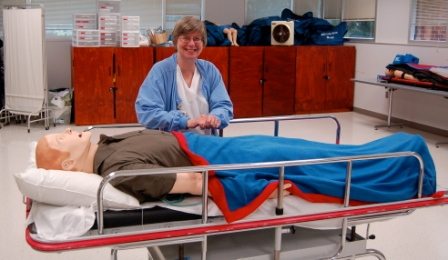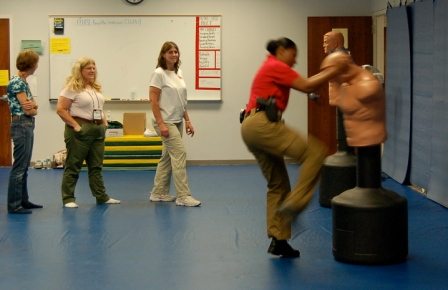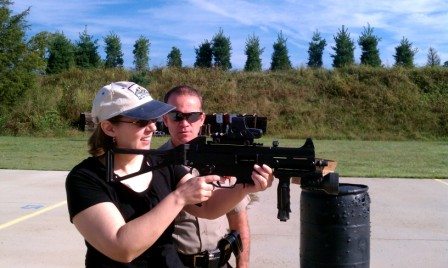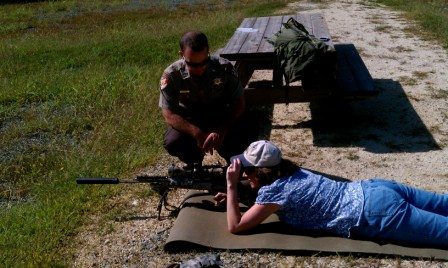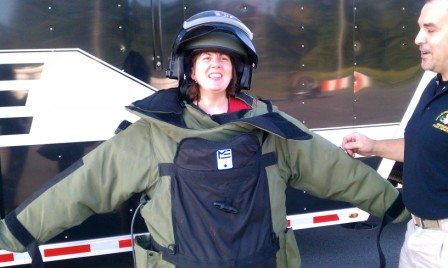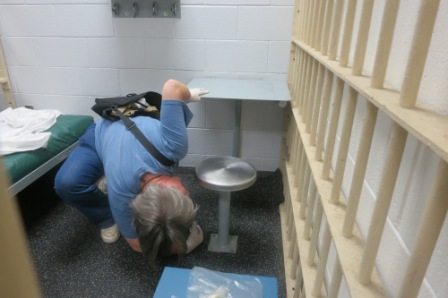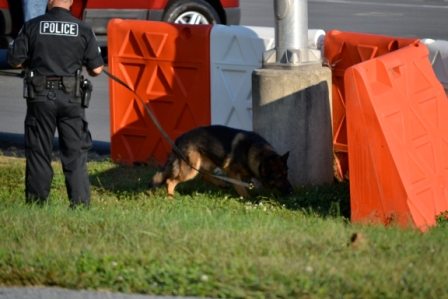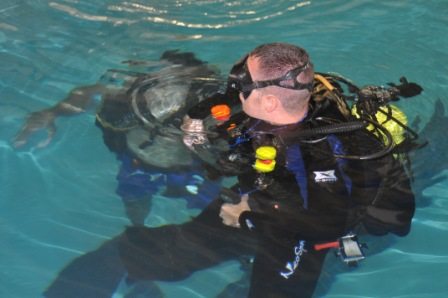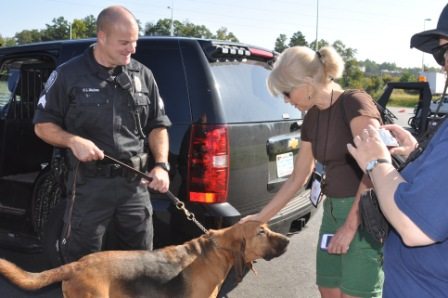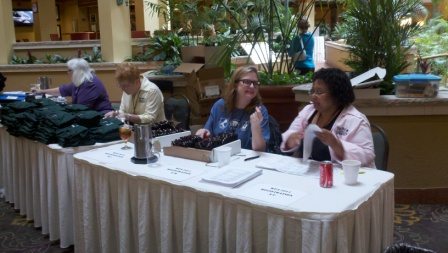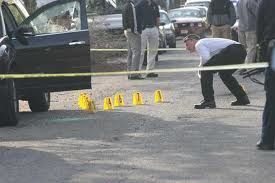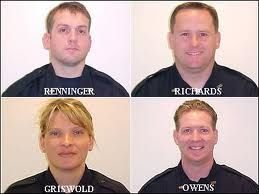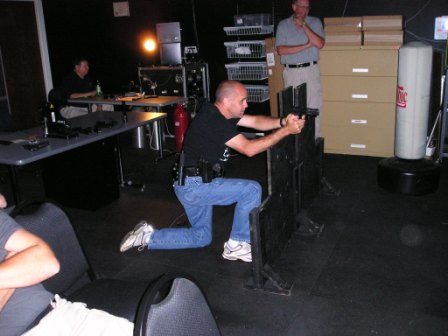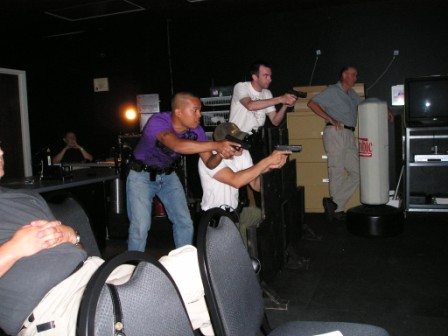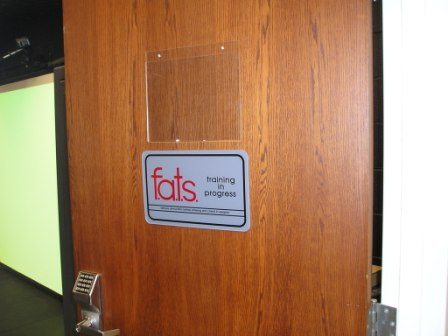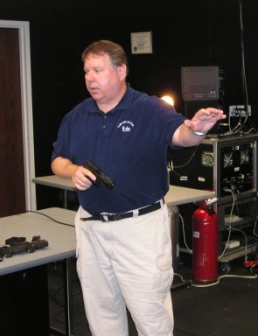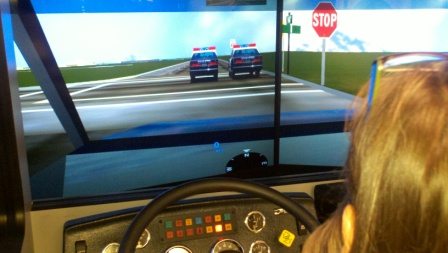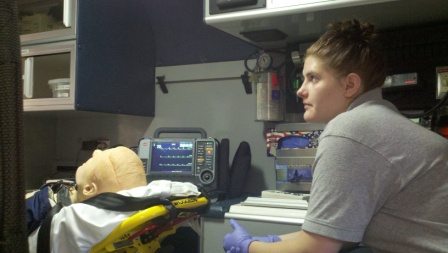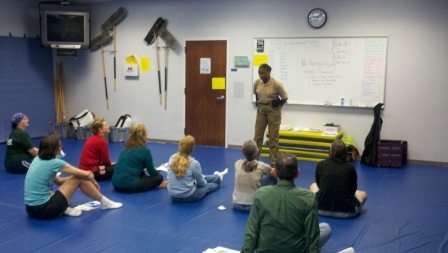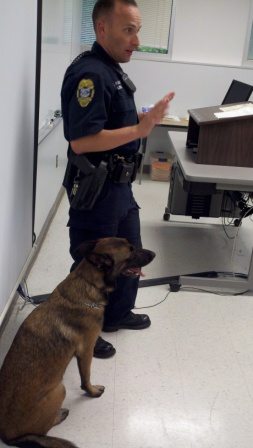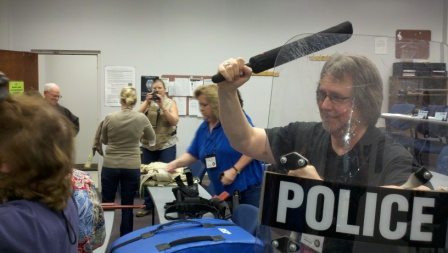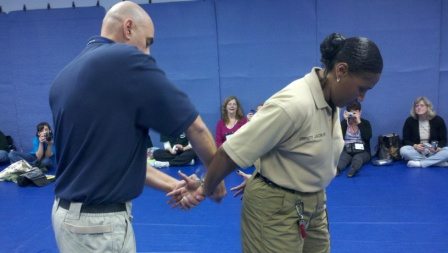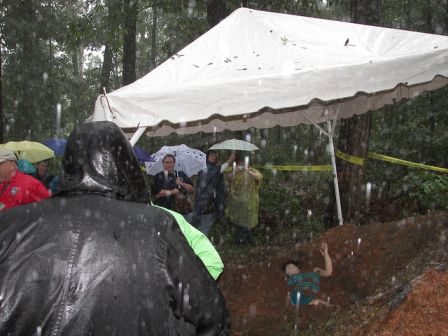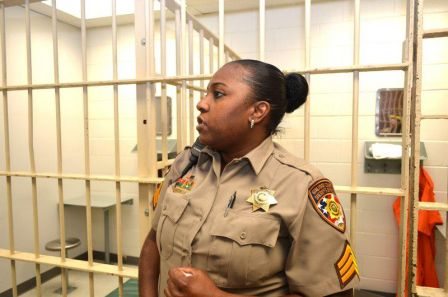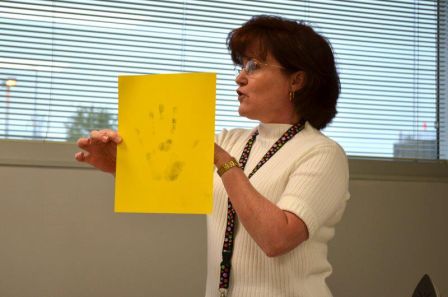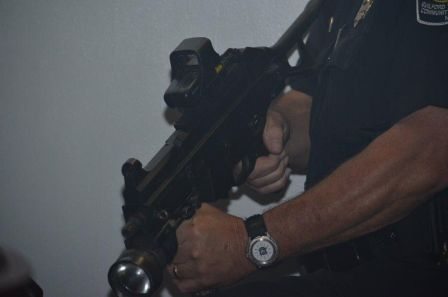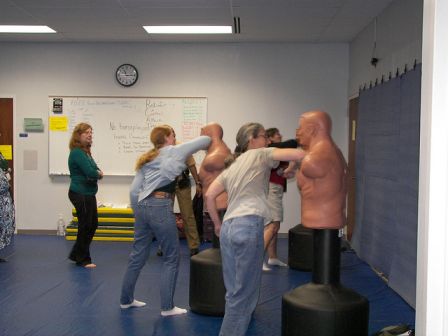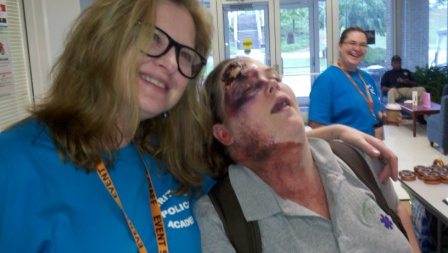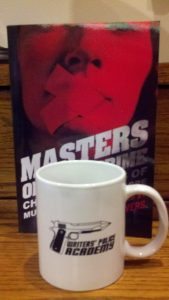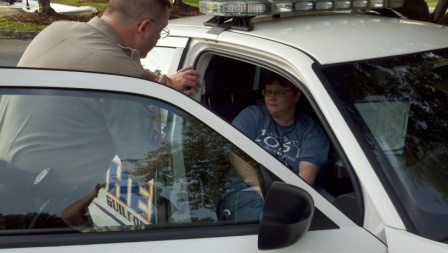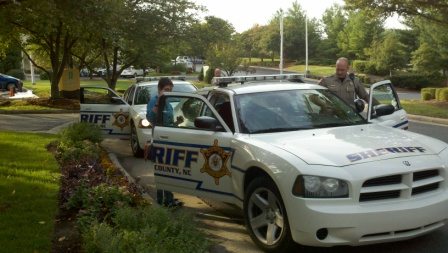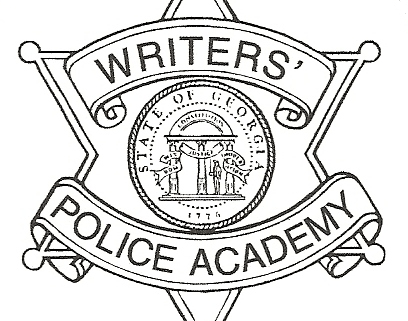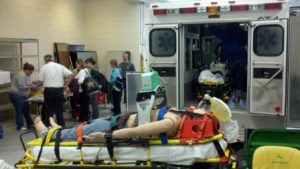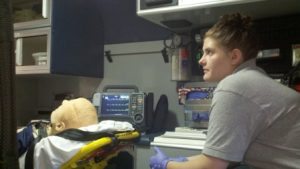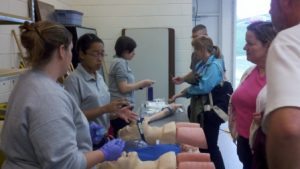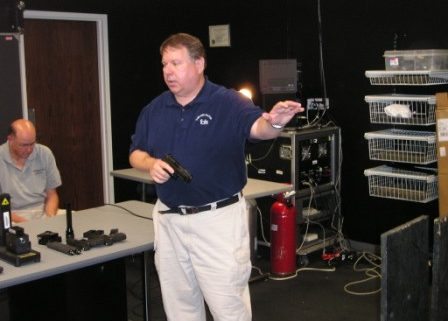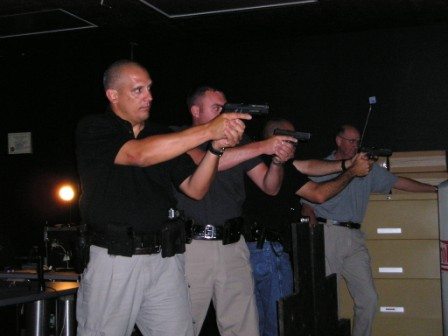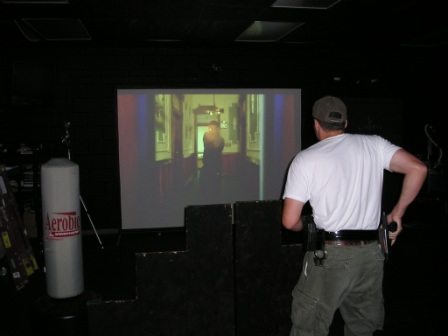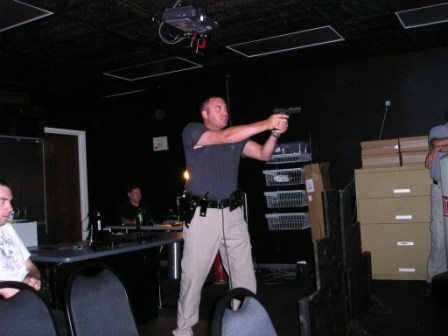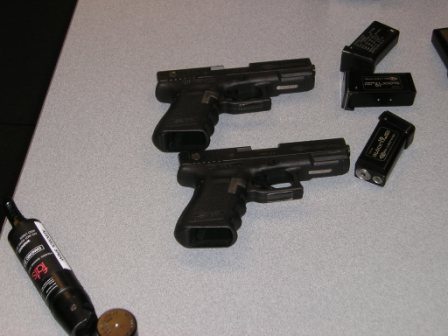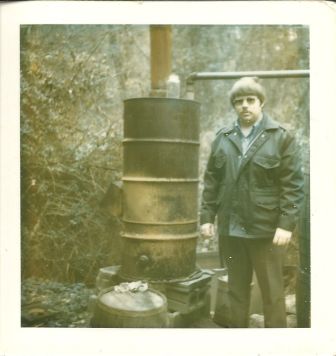THURSDAY
3 p.m. – 9 p.m. – Registration at the hotel
5:30 p.m. – Ride-a-long and Jail Tour Orientation- Embassy Suites hotel – Lee Lofland and Cpl. Dee Jackson, Guilford County Sheriff’s Office
6 p.m.
Agent pitch sessions with agents from Sullivan Maxx Literary Agency (hotel)
Sign up sheets for the agent pitch sessions will be available in the lobby near registration. You MUST sign up in advance!!
6 p.m. – 10 p.m.

Patrol ride-a-longs with police and deputy sheriffs – Guilford County Sheriff’s Office, High Point Police, Greensboro Police.
All riders MUST sign a waiver and submit to a brief non-intrusive background check that simply looks to see if you’re a wanted person or a threat to the country and/or police and others. It does not delve into your criminal or civil history. Ride-a-longs are selected by lottery (the name of every registered attendee is placed in the lottery drawing). Lottery winners will be notified within the two weeks preceding the WPA. Waiver forms and background check information will accompany the winning notifications.
*Photography during the WPA is permitted, and encouraged. However, due to the sensitive nature and content of some workshops and other sessions, we request that you ask individual instructors before taking pictures. Those of you participating in the ride-a-longs must ask each officer about his/her department’s policy on photography. You may NOT photograph civilians engaged by the officers. Also, you may NOT video/record any interaction between the officer and civilians/suspects.
Jail Tour at one of the Guilford County Jails
*You may NOT bring your cameras or cell phones on the jail tour. Please leave them at the hotel. You may only bring a pen/pencil, notepad, and photo ID.
***VIDEOTAPING/AUDIOTAPING WPA WORKSHOPS IS NOT PERMITTED. Absolutely No exceptions!!***
8:00 p.m.
Orientation and brief Q&A – WPA Do’s and Don’t’s – What to expect and when to expect it. The WPA is quite different than the events normally attended by writers, so please bring your questions to this informal gathering at the Embassy Suites Hotel ~ Lee Lofland and Nancy Metzner

*Please remember to bring rain gear. WPA is a rain or shine event! (The weather forecast for the weekend is wonderful. Sunny and warm – don’t forget sunscreen)
FRIDAY

7:30 am – Buses depart Embassy Suites Hotel for academy. Please be on time. The buses cannot wait for anyone! They will pull away at precisely 7:30. Our schedule is extremely tight.
** Dress casually and comfortably! (sweats, jeans, shorts, etc.) The building is air conditioned, but the outdoors is not**
8am – Registration continues (Fire Station classroom across from Public Safety Building)
8:30 FATS (Firearms Training Simulator) and Driving Simulator – ONGOING. Please be at the FATS room and the Driving Simulator room at your designated time. The schedule is extremely tight with absolutely no wiggle room for tardiness, and there are no extra slots. Not even one. If you are not on-deck outside the FATS room when it is your time to shoot, you will forfeit your shoot time. No refunds.
FATS and Driving Simulator schedules will be sent to you via email sometime within the two weeks prior to the WPA. A copy of the schedule will also be available at the event. BE EARLY, if possible!!
*FATS and the driving simulator are add-on workshops. FATS filled long ago, almost at the start of registration.
FATS – Room 132
Driving Simulator – Room 243
EMS Mini “Crash Course” – Learn what really goes on in the back of the ambulance during emergency calls. IV’s, O2, CPR, and more. Hands-on! Instructors on hand at various stations. Ongoing in Room 253

8:45 – 1:00 p.m.
Live police, fire, EMS equipment display and demos K-9’s, SWAT teams, Bomb Squad, robots, Static displays, Mobile Command Posts, Pursuit vehicles, Motorcycles, Fire trucks, Ambulances, Crime Scene Investigation, Dive Teams, and much, much, more. (Driving Track) – local emergency responders and law enforcement (city, state, and county).
**Demos located on the driving track behind the fire station.**

This is a hands-on event. Experts will be available for “show and tell” with the various equipment. However, please ask before touching!
Agent pitch sessions – check posted schedule at the academy (in the lobby area at the police academy/Public Safety Building)
*Please take a moment to visit the volunteers at the Sisters in Crime table to learn more about the organization and to say thanks for helping SinC members attend the WPA at such an attractive discount!

9:00 – 1:30 p.m.
DWI/Texting While Driving (ongoing session. walk up at any time)
How alcohol effects the body, and the dangers of texting and driving. See how well you can drive while under the influence, or while texting. WPA recruits driving on controlled course. ~ North Carolina State Trooper Ingram (Driving track)
***All workshops are on a first-come, first-served basis. Classrooms fill quickly, so please have 2nd and 3rd choices in mind. In fact, it’s a good idea to plan your day in advance. Most sessions are repeated, so if you miss your favorite you’ll have a 2nd opportunity. This is a fast-paced, exciting, packed-to-the-brim event. You will not be able to see and do everything!!***
***VIDEOTAPING/AUDIOTAPING WPA WORKSHOPS IS NOT PERMITTED. Absolutely No exceptions!!***
9:00 – 10:15
Human Trafficking – Instructor Tommy Sluder (Room 127)
Gangs – the life of a gang member, signs, tagging, and colors. ~ Instructor – Culbertson (Room 114)
Making A Lasting Impression – Footwear, tire, and other impression evidence. Hands-on ~ Instructors Robert Skiff and Dave Pauly (Sirchie Fingerprint Laboratory) (Room 241)

10:30 – 11:00
JAWS of Life – Instructors demonstrate how emergency responders use the JAWS of Life tool(s) to extricate crash victims trapped inside automobiles. Actual tools, procedures, and crashed vehicles will be utilized in this real-life exercise. Don’t forget your cameras! ~ Instructor – Tim Fitts (GTCC Fire Department) Driving track
11:00 – 12:00
Fire Station Tour and Equipment Demo ~ Instructor Tim Fitts (Fire station) immediately following JAWS demo (GTCC Fire Department)
10:30 – 12:00
Fingerprinting – The significance of latent fingerprints and how to locate and lift them from a variety of surfaces. ~ Instructor Susan Powell (hands-on) (Room 209)
Cold Cases and the Realities of Investigations ~ Dave Pauly and Dr. Katherine Ramsland (Room 225)
Making A Lasting Impression – Footwear, tire, and other impression evidence. Hands-on ~ Instructor Robert Skiff (Training manager at Sirchie Fingerprint Laboratory) (Room 241)
Outlaw Motorcycle Gangs: Free-wheeling modern renegades or organized crime on two-wheels? An American invention, Outlaw Motorcycle Gangs (OMGS) have been exported across the globe, with a presence on almost every continent. This will be an overview of the history, structure and criminal activities of OMGs.~ Instructor ATF Special Agent Rick McMahan (114)
Jail Searches (All new course!) ~ Instructor Sgt. Catherine Netter (Scenario room – jail cells)
12 – 1 p.m.
Lunch – on your own (available for purchase on academy grounds – proceeds benefit the EMS program) Location – EMS bay
12:45 – Building Searches – recruits will “suit-up” as part of a raid team on a high-risk entry into an actual residence. ~ Instructor Lt. Randy Shepherd (Jamestown Annex) transportation by Guilford County Sheriff’s Office – Meet at academy entrance to board SO vans. First Come First Served! This is not a sit-down workshop! **LIMITED TO 15 PARTICIPANTS! First come, first served** Session will repeat at 2:30
1:00 – 2:15
Suicides, Hangings, and Auto Erotic Death Investigations ~ Instructor Professor Bill Lanning (Room 127)
EMS and the Crime Scene – What are the responsibilities of EMS workers when they must enter a crime scene to treat a patient? Which has the highest priority, the patient or the evidence? Homicide crime scene and gunshot victim(s). Extremely realistic! ~ Instructor Randy Yow (EMS Bay)
Personal Protection for Women – an exciting and fun workshop with instruction on self-defense tactics especially for women. Learn how to avoid being the victim. ~ Instructor Cpl. Dee Jackson (Room 17 – Mat room)
Human Trafficking ~ Instructor Tommy Sluder (Room 127)
Interview and Interrogation – Learn how the pros get the bad guys to confess. Do officers really play “Good cop, Bad Cop?” See an actual interview room complete with recording equipment and “the mirror.” ~ Instructor Andy Russell (Room 109)
Cold Cases and the Realities of Investigations ~ Dave Pauly and Dr. Katherine Ramsland (Room 225)
The First Five Minutes of a Code Blue – The role of the emergency room crash team. ~ Instructor Sarah Clark (Room 253)
2:30 – 3:40
Microscopic Murder – An overview of methods for bioterrorism agent dissemination and detection in the environment. Learn the signs and symptoms of infection and how laboratories identify the causative agent. This workshop is an actual behind-the-scenes perspective on these bad bugs! ~ Instructor Dr. Denene Lofland (Room 127)
Bloodstain Patterns and Presumptive Testing ~ Instructor Dave Pauly (METHODIST UNIVERSITY)/Sirchie Fingerprint Labs/TruForensics, LLC. (Room 241)
Building Searches – recruits will “suit-up” as part of a raid team on a high-risk entry into an actual residence. ~ Instructor Lt. Randy Shepherd (Jamestown Annex) transportation by Guilford County Sheriff’s Office – Meet at academy entrance to board SO vans. First Come First Served! This is not a sit-down workshop! **LIMITED TO 15 PARTICIPANTS! First come, first served**
Outlaw Motorcycle Gangs: Free-wheeling modern renegades or organized crime on two-wheels? An American invention, Outlaw Motorcycle Gangs (OMGS) have been exported across the globe, with a presence on almost every continent. This will be an overview of the history, structure and criminal activities of OMGs.~ Instructor ATF Special Agent Rick McMahan (Room 114)
Interview and Interrogation – Learn how the pros get the bad guys to confess. Do officers really play “Good cop, Bad Cop?” See an actual interview room complete with recording equipment and “the mirror.” ~ Instructor Andy Russell (Room 109)
Fingerprinting – The significance of latent fingerprints and how to locate and lift them from a variety of surfaces. ~ Instructor Susan Powell (hands-on) (Room 209)
NEW! – EMS Patient Transport – An actual ride in the back of an ambulance during a patient transport from the academy to the “ER.” Learn how patients are loaded and transported, IV use, and more! ~ Instructor Joe Yow (hands-on – first come, first served). (EMS bay)
The First Five Minutes of a Code Blue – The role of the emergency room crash team. ~ Instructor Sarah Clark (Room 253)
3:55 p.m.
Announcements
Auditorium (Everyone)
***VIDEOTAPING/AUDIOTAPING WPA WORKSHOPS IS NOT PERMITTED. Absolutely No exceptions!!***
4:00 – 5:25 p.m.
Forensic Identification – World-renowned forensic anthropologist Dr. Elizabeth Murray will discuss skeletal remains and the tools associated with identification. Dr. Murray will also present information about NamUs (the National Missing and Unidentified Persons System) and some of its success stories. (AT Auditorium)

Dr. Murray is known world-wide for her expertise in the field of forensic anthropology. As an expert, she often appears on television programs such as National Geographic, Forensic Files, Unsolved Mysteries, and she was featured in several episodes of Skeleton Stories on Discovery Health Channel.
Dr. Murray is the expert who discovered key evidence needed to solve the murder featured in the true crime tale, “Murder on Minor Avenue,” written by Lee Lofland.
5:35 – buses depart for hotel
6:30 – cash bar
7:00 – 8:00 p.m.
Reception at event hotel (Embassy Suites)
*The reception is sponsored by Sisters in Crime National. Please be sure to send your notes of appreciation to the SinC board of directors!
***VIDEOTAPING/AUDIOTAPING WPA WORKSHOPS IS NOT PERMITTED. Absolutely No exceptions!!***
8:00 p.m. – until
Night Owl Presentation

“Mindful Investigations: How to Think Like Sherlock Holmes.” ~ Special guest speaker – Dr. Katherine Ramsland
You absolutely will not want to miss this fascinating interactive presentation!
Dr. Katherine Ramsland has published 44 books and over 1,000 articles, and recently had a #1 bestseller on the Wall Street Journal’s nonfiction list.
Dr. Ramsland speaks widely on serial killers and psychopaths, and is a frequent commentator on crime documentaries. She has appeared on 20/20, 48 Hours, Larry King Live, and numerous cable programs.
SATURDAY

7:30 a.m. – buses depart for academy
8 – 8:05 – Announcements and important safety instructions for the day – Mandatory attendance by all WPA recruits. Assemble in the grass at the driving track. DO NOT ENTER THE TRACK/ASPHALT!! ~ Lee Lofland and Jay Goodnight, GCSO
9:00 – FATS and Driving Simulator – ongoing
EMS Mini “Crash Course – Learn what really goes on in the back of the ambulance during emergency calls. IV’s, O2, CPR, and more. Hands-on! Instructors on hand at various stations. Ongoing in Room 253. Walk in any time.
***VIDEOTAPING/AUDIOTAPING WPA WORKSHOPS IS NOT PERMITTED. Absolutely No exceptions!!***
9:00 – 10:15
Suicides, Hangings, and Auto Erotic Death Investigations – Professor Bill Lanning (Room 127)
Training New Recruits – A look at life as a new police officer. Introduction of mandates to become a police officer. Hands-on with police equipment—gun belt, vest, weapons, shields, etc. Instructor Lieutenant Rick Brewer (GTCC Police Academy Coordinator) (Room 225)
The Anatomy of an Undercover Cop, and How It Can Help Your Novel ~ Instructor NYPD Detective Marco Conelli (Room 209)
Drug Interdiction – “Hidden Compartments” is an in-depth look at how officers locate concealed narcotics. Hands-on exercises and lecture taught by nationally-renowned expert in the field. . Instructor Tim Cardwell (Room 109)
Fire Scene Investigation – Learn how the pros locate the point of origin of a structure fire. How they investigate arson. What happens when a body is discovered inside a burning building?Are arson investigators sworn police officers? ~ Instructor Jerry Coble – Asst. Fire Marshal (Room 114)
Viewing the Crime Scene in a Different Light – Alternate light sources used by crime scene investigators, including the remarkable Krimesite Imager. Hands on workshop – Dave Pauly/Sirchie Fingerprint Labs/TruForensic, LLC. (Room 241)
10:30 – 11:45
Fire Scene Investigation – Learn how the pros locate the point of origin of a structure fire. How they investigate arson. What happens when a body is discovered inside a burning building?Are arson investigators sworn police officers? ~ Instructor Jerry Coble – Asst. Fire Marshal (Room 241)
Drug Interdiction – “Hidden Compartments” is an in-depth look at how officers locate concealed narcotics. Hands-on exercises and lecture taught by a nationally-renowned expert in the field. ~ Instructor Sergeant Tim Cardwell, N.C. Highway Patrol (Room 127). (repeat of morning session)
Handcuffing and Arrest Techniques – Learn how the pros gain control of violent suspects and then place them under arrest. Hands-on. This wildly popular workshop is back by popular demand. ~ Instructor Field Training Officer and Subject Control and Arrest Technique Expert Stan Lawhorne (repeat session) (Mat Room 117)
Jail Searches (All new course!) ~ Instructor Sgt. Catherine Netter (Scenario room jail cells)
Drug Interdiction – “Hidden Compartments” is an in-depth look at how officers locate concealed narcotics. Hands-on exercises and lecture. ~ Instructor Tim Cardwell (repeat of morning session)
Police Gunfighting–Techniques, tactics, and training of law enforcement shooters. ~ Instructor ATF Special Agent Rick McMahan
Bloodstain Interpretations and Presumptive Tests ~ Instructors Dave Pauly and Robert Skiff (Sirchie Fingerprint Laboratory)
12 – 12:45pm – Lunch
***VIDEOTAPING/AUDIOTAPING WPA WORKSHOPS IS NOT PERMITTED. Absolutely No exceptions!!***
1:00 – 2:15 p.m.
Underwater Evidence Recovery: Session One – Guilford County Sheriff’s Office Dive Team demonstrates the equipment and techniques used in locating and recovering underwater evidence, including bodies. ~ YMCA pool (Sheriff’s office vans to pick up at front entrance. first come, first served!) Session will repeat at 2:30.
Shallow Grave Investigation – the untold story from the grave. Be prepared for a short walk in the woods. Sights, sounds, and smells are all activated in this all-to-realistic crime scene. Don’t forget your cameras! ~ Instructor Bill Lanning (class will meet outside)
K-9 Demo – Watch the police dogs in action. Narcotics search and suspect apprehension. Q&A. Bring your cameras! Please follow all instruction by the officers! (class will meet outside – location TBA)
Mock Riot – (use of smoke and mock gas) – Crowd hostility along with crowd disbursement ~ Instructor Andy Russell (class will meet at the front entrance to academy)
Handcuffing and Arrest Techniques – Learn how the pros gain control of violent suspects and then place them under arrest. Hands-on. This wildly popular workshop is back by popular demand. ~ Instructor Field Training Officer and Subject Control and Arrest Technique Expert Stan Lawhorne (repeat session) (Mat Room 117)
EMS and the Crime Scene – What are the responsibilities of EMS workers when they must enter a crime scene to treat a patient? Which has the highest priority, the patient or the evidence? Homicide crime scene and gunshot victim(s). Extremely realistic! ~ Instructor Randy Yow (EMS Bay)
Bloodstain Interpretations and Presumptive Tests ~ Instructors Dave Pauly and Robert Skiff (Sirchie Fingerprint Laboratory) (Room 241)
Women In Law Enforcement – What special challenges do women face when they decide to pin on a badge? Are the uniforms the same as those worn by their male counterparts? Do they carry the same weapons? Are promotions handed out fairly? How about arresting those big, burly men? So, exactly how bad is the sexual harassment? Do prisoners really say those things to you? – Instructor Sgt. Catherine Netter (Room 114)
2:30 – 3:40
Underwater Evidence Recovery: Session Two – Guilford County Sheriff’s Office Dive Team demonstrates the equipment and techniques used in locating and recovering underwater evidence, including bodies. ~ YMCA pool (Sheriff’s office vans to pick up at front entrance. first come, first served!)
Personal Protection for Women – an exciting and fun workshop with instruction on self-defense tactics especially for women. Learn how to avoid being the victim. Instructor Cpl. Dee Jackson. Location – mat room. Please remove your shoes before stepping onto the mats! (Mat room 117)
Police Gunfighting–Techniques, tactics, and training of law enforcement shooters (repeat session). ~ Instructor ATF Special Agent Rick McMahan (Room 127)
Microscopic Murder – An overview of methods for bioterrorism agent dissemination and detection in the environment. Learn the signs and symptoms of infection and how laboratories identify the causative agent. This workshop is an actual behind-the-scenes perspective on these bad bugs! (repeat session) ~ Instructor Dr. Denene Lofland (Room 225)
The Anatomy of an Undercover Cop, and How It Can Help Your Novel ~ Instructor NYPD Detective Marco Conelli (Room 209)
Crime Scene to Court: Evidence Handling and Chain-of-Custody – See actual materials and process used to package various evidence items ~ Instructors Robert Skiff, Dave Pauly, and Dr. Katherine Ramsland (Room 113)
The First Five Minutes of a Code Blue – The role of the emergency room crash team ~ Instructor Sarah Clark (Room 253)
3:55 – Announcements
***VIDEOTAPING/AUDIOTAPING WPA WORKSHOPS IS NOT PERMITTED. Absolutely No exceptions!!***

4:00 – 5:25 p.m. Marcia Clark – “The Truth in Fiction – Delivering Your World Without Boring Them to Death.”
Presentation and Q&A (main auditorium)
Marcia’s presentation will delve into her role as a Special Trials prosecutor and how her work alongside police investigators inspired her Rachel Knight series.
Marcia Clark, one of the most recognized figures in the legal world, is a former Los Angeles deputy district attorney who was the lead prosecutor on the O.J. Simpson murder case. She co-wrote a bestselling nonfiction book about the trial, Without a Doubt, and is a frequent media commentator and columnist on legal issues. Marcia current release, Guilt By Degrees, a thriller, is the follow up to her bestselling novel Guilt By Association.
“It’s no big surprise that Marcia Clark knows her way around a courtroom, and a murder mystery—but she’s also a terrific writer and storyteller.”
—James Patterson
5:35 – buses depart for hotel
6:30 – book store opens
* Suggested banquet attire is business casual

* You absolutely must present your WPA name tag to gain admittance to the banquet and book-signing.
6:30 – cash bar
7:00 – 8:30 banquet, awards, silent auction and raffle, and announcements
SPECIAL MYSTERY GUEST! You won’t believe your eyes!
8:35 – Book-signing immediately following the banquet
*The list of items to be raffled and auctioned at the 2012 WPA is OUTSTANDING!
To name a few:

– Fender guitar signed especially for the WPA. Donated by Kathy Harris, author and marketing manager for the Oak Ridge Boys – signatures include The Oak Ridge Boys, Vince Gill, Brad Paisley, Lady Antebellum, and Keith Urban. This item is priceless! Also, a signed book by Kathy Harris.
– Opposite of Fate – Hardcover signed by Amy Tan
– Greatest Moments in LSU College Football – signed by 5 players Ltd. Ed. # 478/500
– “One Hundred Seasons” Duke University Basketball- # 352/500
– Patti LaBelle Cookbook – signed by singer Patti LaBelle
– Madam Secretary – Madeleine Albright memior – signed
– Life Beyond Measure (Letters to My great Granddaughter) – 1st print HC signed by actor Sidney Poitier
– Meditations from the Joint -Hardcover signed by Tommy Chong (w/ a photo of him signing the book)
– A grocery bag made of crime scene tape fabric
-The Talisman and Black House by Stephen King& Peter Straub Ltd. Ed. Hardcover set. Set is signed by Peter Straub and Rick Berry
– “A Remarkable Mother” HC 1st Printing signed by former US President Jimmy Carter
– Official equipment from Sirchie Fingerprint Laboratories
– New York Yankees encyclopedia Signed by 9 former Yankee’s Players it is a Ltd. Edition
– A character in Stuart Woods’ next novel named after the auction winner
TV and Movie Scripts
South Park – Signed by Trey Parker
Family Guy- Signed by Seth MacFarlane
10 Things I Hate About You- Signed by Julia Stiles
The Cider House Rules- Signed by Charlize Theron
Nightmare On Elm Street- Signed by Robert England (Freddy Krueger)
Pirates of the Caribbean- Signed by Johnny Depp
Ghost- Signed by Whoopi Goldberg
Young Frankenstein- Signed by Mel Brooks
And dozens of books signed by your favorite authors, such as Joseph Wambaugh, Faye Kellerman, Tess Gerritsen, Joseph Finder, and many, many other items too numerous to mention in this small space!

8:30 – keynote address with Lee Child
Book signing immediately following banquet
*Singer songwriter Stacy Allen will entertain and host sing-a-longs immediately following the book-signing. Bring your acoustic guitars and voices and join in. It’s a lot of fun.
SUNDAY

10am – noon – Debriefing Panel with instructors. This session is rated one of the best of the academy! (bring paper, pens, questions, and a fantastic sense of humor)
Notes of interest:
*Due to the highly unpredictable world of law enforcement, the schedule and workshop topics may change at any time. Remember, many workshops are taught by active-duty police and forensics experts.
* No personal weapons of any type are permitted on the WPA/GTCC grounds. No exceptions! (this includes any firearm, ammunition, chemical sprays, stun guns, edged weapons – knives, daggers, etc., and martial arts weapons. If it’s a weapon, leave it at home or in your hotel room). We supply all training equipment. Any violations of this rule will result in immediate dismissal from the WPA program. Remember, this is a college campus/police academy.
*Armed law enforcement officers must have proper department ID and badge. Please, for your safety and the safety of others, alert academy/WPA staff if you are carrying concealed. This is extremely important due to the active scenarios that may “pop up” unexpectedly throughout the event.
* WPA recruits may only bring a pencil, ID, and notepad on the jail tours. No other items will be permitted inside the jail. This is a working jail that houses prisoners who’ve committed crimes that range from minor misdemeanors to murder. Weapons, purses, car keys, cell phones, and/or cameras are NOT permitted.
***VIDEOTAPING/AUDIOTAPING WPA WORKSHOPS IS NOT PERMITTED. Absolutely No exceptions!!***

